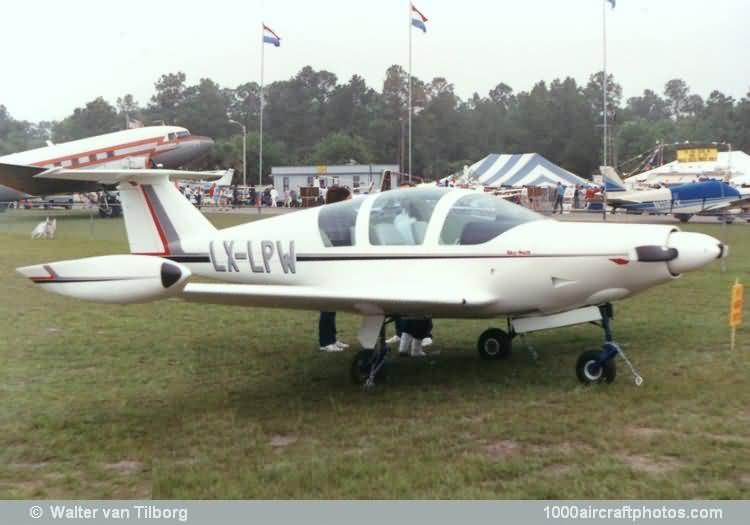It was exhibited at the 1985 RSA meeting at Brienne-le-Château in France, before it had made its first flight that same year, registered LX-LPW. Flash-3 specification and data follows.
Type: Three-seat homebuilt aircraft.
Airframe: Cantilever low-wing monoplane. Entire air-frame constructed of vinylester and resin composites, partially strengthened with carbon fiber. Wings foldable for storage. Wing section at root NACA 43012, at tip 43010. Dihedral 4" 30'. Incidence at root 2" 30', at tip 1". No sweepback. Main spar laminated inside wings. Ailerons and electrically actuated flaps interconnected. Conventional molded monocoque fuselage, a trapezoidal vertical tail with all-moving tail plane on top (T-tail), anti-servo tab, fin, and rudder. (Reportedly later a large ventral fin was fitted.)
Landing gear: Electrically and hydraulically retracted tricycle type, with all three wheels size 5.00-5 (40 lb/sq.in, 2.81 kg/sq.cm). Shock absorbers. Main wheel hydraulic brakes.
Power plant: An 150 hp Avco Lycoming O-320 flat-four engine, driving a Mühlbauer two-blade metal constant-speed propeller with spinner. Other engines of up to 260 hp could be fitted. Fuel capacity: standard tank 69 gal (261 l); long-range tank 143 gal (541 l); long-range tank with tip tanks 169.3 gal (641 l).
Accommodation: Pilot and two passengers under large rearward sliding canopy. Baggage capacity 264 lb (120 kg).
Avionics: IFR instrumentation plus Micrologic ML 6000 Loran C and radio com standard.
